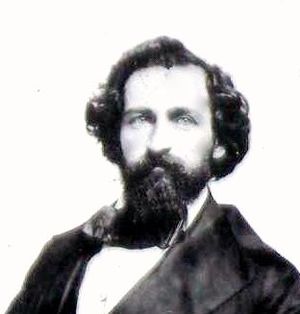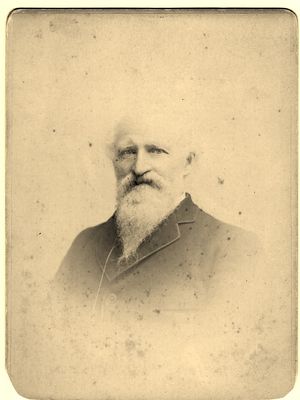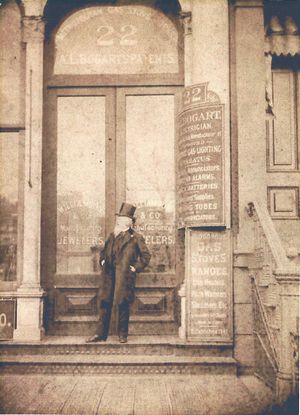Abraham Lawrence Bogart: Difference between revisions
No edit summary |
No edit summary |
||
| Line 19: | Line 19: | ||
Bogart continued to innovate throughout his career. In 1884 he held an exhibition at his offices to introduced a line of devices for hotels and townhouses. He introduced the fire alarm with thermostats in each room connected to a central station showing the location of the fire. Large gongs on each floor would also indicate the fire location and continue to sound until turned off (The Electrical World, Aug. 23, 1884, pg. 64). He thus introduced a standard practice that we still take for granted today. In 1890, at the age of 72, he introduced a line of burglar alarms combined with annunciators that included several novel features (The Electrical Engineer, Aug. 13, 1890, pg. 163). To quote The Electrical World, Sept 1, 1888 (pg. 111), "Mr Bogart has long been known for his innovative and inventive genius." | Bogart continued to innovate throughout his career. In 1884 he held an exhibition at his offices to introduced a line of devices for hotels and townhouses. He introduced the fire alarm with thermostats in each room connected to a central station showing the location of the fire. Large gongs on each floor would also indicate the fire location and continue to sound until turned off (The Electrical World, Aug. 23, 1884, pg. 64). He thus introduced a standard practice that we still take for granted today. In 1890, at the age of 72, he introduced a line of burglar alarms combined with annunciators that included several novel features (The Electrical Engineer, Aug. 13, 1890, pg. 163). To quote The Electrical World, Sept 1, 1888 (pg. 111), "Mr Bogart has long been known for his innovative and inventive genius." | ||
In 1887, at the age of 69, he married 17 year old Julia Appley, the daughter of Captain Jacob Appley, a wealthy New Yorker who was the half brother of Abraham's first wife. The | In 1887, at the age of 69, he married 17 year old Julia Appley, the daughter of Captain Jacob Appley, a wealthy New Yorker who was the half brother of Abraham's first wife. The marriage was considered scandalous at the time. Bogart passed away during a bike ride with his son in 1896<ref name="refnum1" /> and was survived by five children, three by his first wife and two by his second. Two of his sons, Adrian (A.) Livingston Bogart and Eugene E. Bogart worked with him in the electrical business, and continued his firm under the name A.L. Bogart. Adrian was a prolific inventor in his own right and his expert opinion was often relied upon by the Courts in patent cases.<ref name="refnum2" /> Later, after the early deaths of both sons, the firm continued under the direction of his granddaughter Ethel Livingston Bogart, the 25 year old daughter of A. Livingston Bogart. | ||
== Further Reading == | == Further Reading == | ||
Revision as of 09:58, 7 February 2014
Biography
Born: November 20th, 1818
Died: July 25th, 1896
Abraham Lawrence Bogart was left an orphan at the age of thirteen, with two brothers to support. In the face of hardships, he began working for a dry goods house on Broadway, and within a few years he owned the business. He was the first to package fine chewing tobacco in tins.[1] He experimented with Bunsen burners while still a schoolboy and was the first to apply the Bunsen burner to gas stoves, practically starting the gas-stove industry.[2] His patented stove designs included a model (patent 71,269) for indoor use where no outside ventilation was available. Exhaust gasses were purified by passing through chambers containing quicklime. Another innovation consisted of attachments to conventional wood and coal stoves for conversion to gas (patent 92,931). He was also the first to build smokestacks for locomotives(1). He conducted scientific experiments into the photometric properties of gas composition and burner design to develop more efficient lighting sources.[3] He was cited as one of the earliest researchers into shadowgraphy, the name by which X-Rays was known.[4] He provided gas meters and photometric devices for gas companies.
In 1867 he entered the lighting business and proceeded to create multiple applications using electricity for the ignition of gas jets. Patent no. 119,561 is an example of an original design. The Bogart Frictional Gas Lighting Machine became the accepted design for venues such as churches and theatres where a large number of fixtures had to be controlled reliably from a central switch. His jobs included the Senate Chamber in the US Capitol Building (1870) and Saint Patrick's Cathedral in NYC (1888). He patented as many as sixty inventions for electric gas lighting apparatuses. Bogart fiercely defended his patents and was very successful in patent litigation, nearly always prevailing in the case.[1]
Many of the Bogart electric gas lighting systems for large venues remained in use long after the introduction of the incandescent bulb. To quote the Lighting Journal, December, 1913, "The Bogart Frictional Gas Lighting Machine has been on the market for over 40 years, and of the 15,000 machines sold since 1870, many are still in active service."
Bogart continued to innovate throughout his career. In 1884 he held an exhibition at his offices to introduced a line of devices for hotels and townhouses. He introduced the fire alarm with thermostats in each room connected to a central station showing the location of the fire. Large gongs on each floor would also indicate the fire location and continue to sound until turned off (The Electrical World, Aug. 23, 1884, pg. 64). He thus introduced a standard practice that we still take for granted today. In 1890, at the age of 72, he introduced a line of burglar alarms combined with annunciators that included several novel features (The Electrical Engineer, Aug. 13, 1890, pg. 163). To quote The Electrical World, Sept 1, 1888 (pg. 111), "Mr Bogart has long been known for his innovative and inventive genius."
In 1887, at the age of 69, he married 17 year old Julia Appley, the daughter of Captain Jacob Appley, a wealthy New Yorker who was the half brother of Abraham's first wife. The marriage was considered scandalous at the time. Bogart passed away during a bike ride with his son in 1896[1] and was survived by five children, three by his first wife and two by his second. Two of his sons, Adrian (A.) Livingston Bogart and Eugene E. Bogart worked with him in the electrical business, and continued his firm under the name A.L. Bogart. Adrian was a prolific inventor in his own right and his expert opinion was often relied upon by the Courts in patent cases.[2] Later, after the early deaths of both sons, the firm continued under the direction of his granddaughter Ethel Livingston Bogart, the 25 year old daughter of A. Livingston Bogart.
Further Reading
Bogart letter to Edward Clark - architect of the Capitol - Proposal for electric gas lighting in the U.S. Senate Chamber. Written and signed by A.L. Bogart (Abraham Lawrence) to Edward Clark, architect of the Capitol, September, 1870. The gas jets were ignited using a sparking mechanism.
References
- ↑ 1.0 1.1 1.2 "Obituary.", The Electrical Age 18, no. 5, 1 August, 1896, pg. 426.
- ↑ 2.0 2.1 "Obituary.", Electrical World and Engineer, Vol. XLV, No. 20. pg. 958.
- ↑ "Miscellaneous Business.", The Scientific American, pg. 247. April 14, 1860.
- ↑ "Rontgen Rays.", The Electrical World, February 29,1896, Vol. XXVII, No.9, pg.221.


